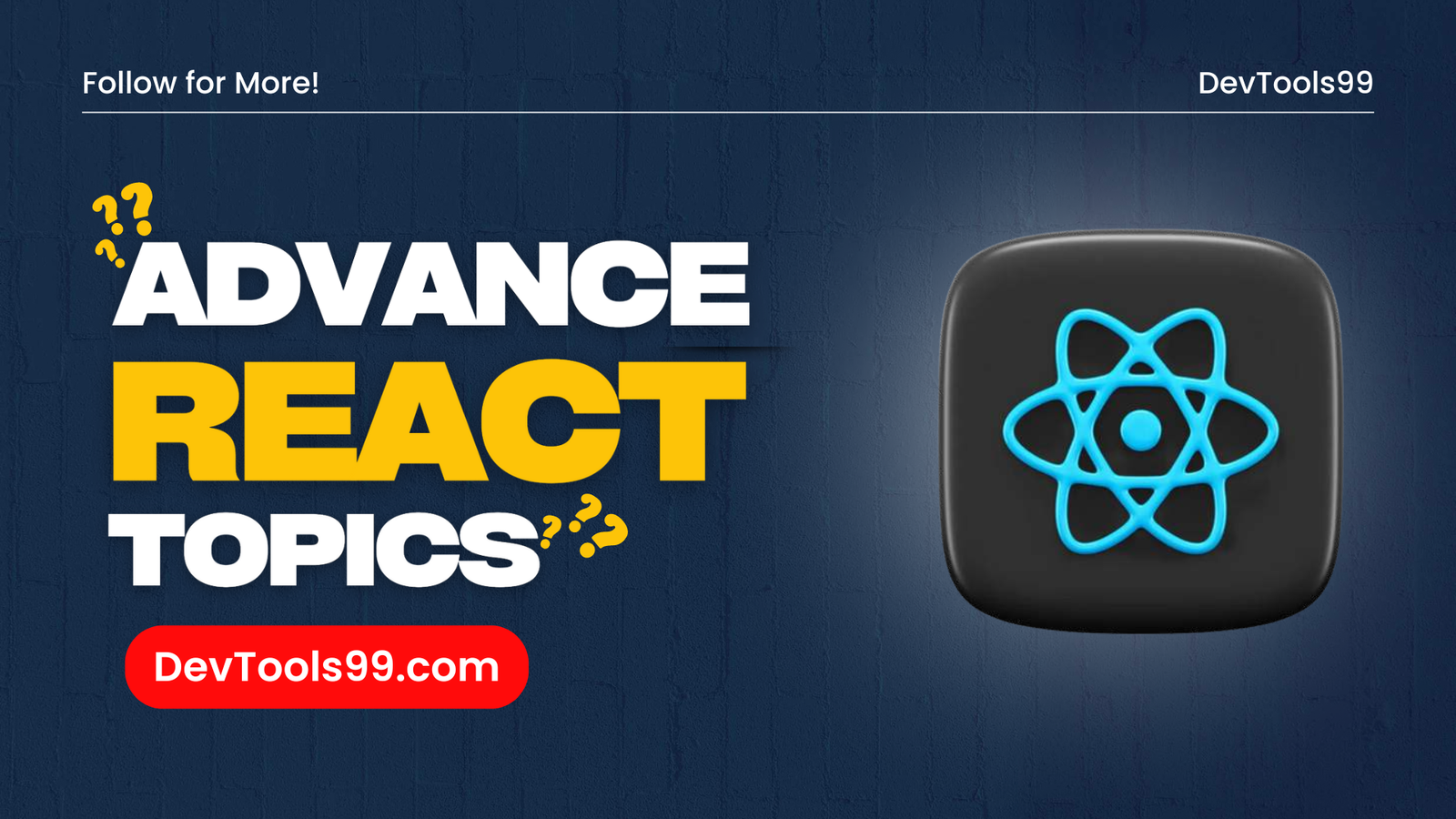
Advanced React Topics: Enhancing Performance and Flexibility
As React applications grow in complexity, understanding advanced concepts becomes crucial for maintaining performance and ensuring a seamless user experience. In this post, we'll explore three key areas of advanced React development: Lazy Loading, Higher-Order Components (HOCs), and Optimization techniques. Mastering these topics will enable you to build more efficient, scalable, and maintainable React applications.
1. Lazy Loading
Lazy loading is a technique that defers the loading of resources until they are actually needed. In React, lazy loading can significantly improve the initial load time of your application by splitting your code into smaller chunks and loading them on demand.
Code Splitting
Code splitting is the process of breaking your bundle into smaller, manageable chunks that can be loaded as needed. This reduces the initial load time by loading only the critical parts of your application first.
// Example of code splitting with dynamic imports
import { lazy } from 'react';
const MyComponent = lazy(() => import('./MyComponent'));
React.lazy() and Suspense
React provides the React.lazy() function to enable lazy loading of components. When combined with Suspense, you can asynchronously load components and display a fallback UI while the component is loading.
import React, { Suspense } from 'react';
const LazyComponent = React.lazy(() => import('./LazyComponent'));
function App() {
return (
Loading...}>
< LazyComponent />
< /Suspense>
);
}
Route-based Lazy Loading
Lazy loading can also be applied to routes, ensuring that only the necessary components for each route are loaded when the route is accessed. This technique is particularly useful for large applications with many routes.
import { lazy } from 'react';
import { Route, BrowserRouter as Router } from 'react-router-dom';
const Home = lazy(() => import('./Home'));
const About = lazy(() => import('./About'));
function App() {
return (
< Router>
< Suspense fallback={}>
< Route path="/" component={Home} />
< Route path="/about" component={About} />
< /Suspense>
< /Router>
);
}
Dynamic Imports
Dynamic imports allow you to load modules or components only when certain conditions are met. This enables more fine-grained control over lazy loading and can be particularly useful for loading optional features or resources.
// Example of dynamic import
function loadComponent() {
import('./OptionalComponent').then((module) => {
const Component = module.default;
// Use the component
});
}
2. Higher-Order Components (HOCs)
Higher-Order Components (HOCs) are a powerful pattern in React that allows you to reuse component logic across multiple components. HOCs enhance your components by adding additional behavior or modifying their props.
Composition
HOCs can be composed to add multiple behaviors to a component. This composition allows for better code reuse and separation of concerns, enabling you to apply different behaviors to your components without duplicating code.
// Example of composing HOCs
const enhance = compose(withRouter, connect(mapStateToProps));
const EnhancedComponent = enhance(MyComponent);
Props Manipulation
HOCs can manipulate the props passed to components, such as adding new props, transforming existing ones, or even filtering out certain props. This flexibility makes HOCs a powerful tool for customizing component behavior.
// Example of props manipulation with HOC
function withUserName(WrappedComponent) {
return function EnhancedComponent(props) {
return ;
};
}
Cross-Cutting Concerns
HOCs are particularly useful for encapsulating cross-cutting concerns like authentication, logging, or performance monitoring. By wrapping components with HOCs that handle these concerns, you can apply them consistently across your application.
// Example of an HOC handling authentication
function withAuth(WrappedComponent) {
return function AuthenticatedComponent(props) {
if (!props.isAuthenticated) {
return ;
}
return ;
};
}
Render Props vs. HOCs
While HOCs offer a straightforward API for enhancing components, render props provide an alternative pattern that can offer more flexibility. Understanding the differences between these patterns is crucial for choosing the right approach in your projects.
// Example of render props pattern
function DataFetcher({ render }) {
const data = fetchData();
return render(data);
}
function App() {
return (
} />
);
}
3. Optimization Techniques
Optimizing your React application ensures that it runs smoothly and efficiently, even as it scales. Let's explore some key optimization techniques that can help improve performance.
Memoization
Memoization is a technique used to cache the results of expensive computations or function calls, preventing unnecessary re-renders. In React, you can use the useMemo() hook or libraries like memoize-one to implement memoization.
// Example of memoization with useMemo
const expensiveCalculation = useMemo(() => calculateExpensiveValue(input), [input]);
Virtualization
Virtualization techniques like windowing or infinite scrolling allow you to render only the visible portion of large lists or tables, reducing the performance impact of rendering a large number of elements at once.
// Example of virtualization with react-window
import { FixedSizeList as List } from 'react-window';
function MyList({ items }) {
return (
{({ index, style }) =>}
);
}
Server-Side Rendering (SSR)
Server-Side Rendering (SSR) can significantly improve the initial load time and SEO of your application by rendering the initial HTML on the server and hydrating it on the client. This ensures that users can interact with your application faster, even on slow networks.
// Example of setting up SSR with Next.js
import React from 'react';
function HomePage({ initialData }) {
return;
}
export async function getServerSideProps() {
const res = await fetch('https://api.example.com/data');
const data = await res.json();
return { props: { initialData: data } };
}
export default HomePage;
Tree Shaking
Tree shaking is a technique used during the build process to remove unused code from your bundle. By utilizing tree shaking, you can reduce the size of your bundle and improve loading times, ensuring that only the necessary code is included in your application.
// Example of enabling tree shaking with Webpack
// Webpack automatically performs tree shaking in production mode
module.exports = {
mode: 'production',
// other configurations
};
In conclusion, mastering these advanced React topics—lazy loading, higher-order components, and optimization techniques—will enable you to build more efficient, scalable, and maintainable React applications. By implementing these strategies, you can enhance both the performance and flexibility of your projects, ensuring a better user experience.
Follow Us:
Stay updated with our latest tips and tutorials by subscribing to our YouTube Channel.
